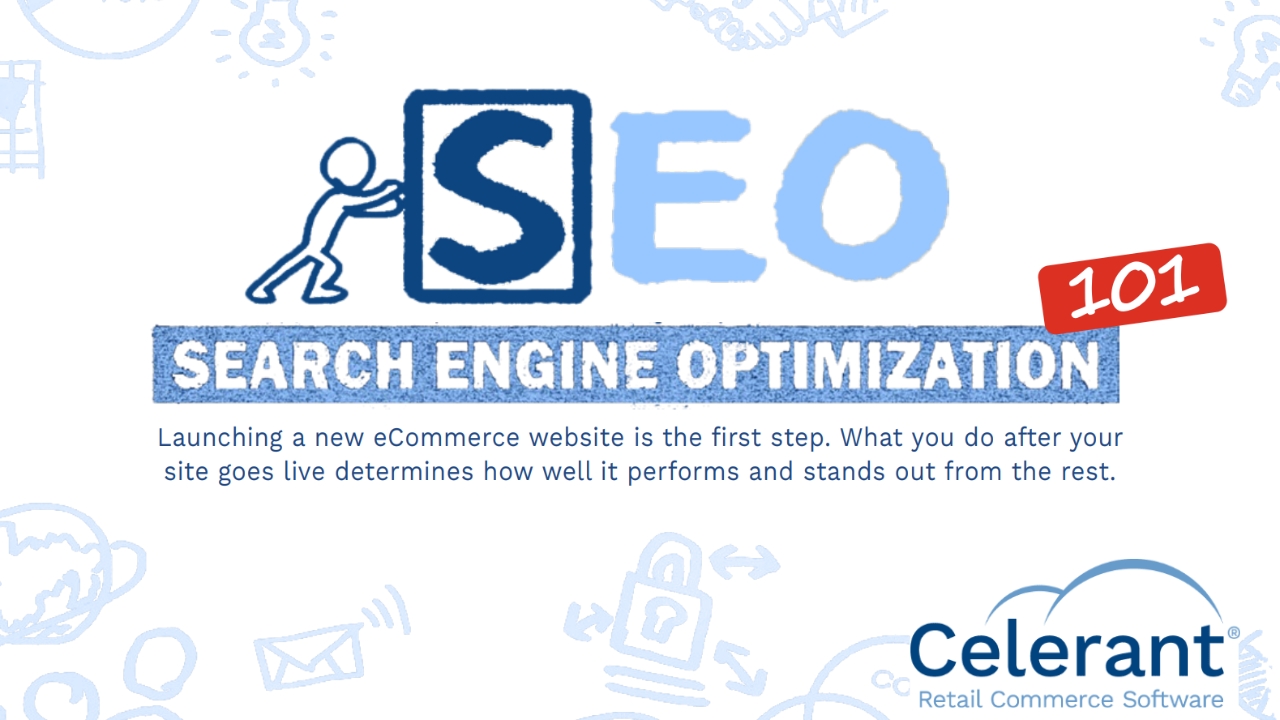The first step in Search Engine Optimization (SEO) is conducting keyword research. It identifies relevant terms users search for.
Keyword research forms the foundation of any effective SEO strategy. This process helps you understand what potential customers are searching for and how they phrase their queries. By identifying these keywords, you can optimize your website content to rank higher in search engine results.
Proper keyword targeting ensures that your content reaches the right audience, driving more organic traffic to your site. Prioritizing keyword research can improve your site’s visibility and relevance. This crucial step sets the stage for all subsequent SEO efforts, making it indispensable for achieving long-term success in search engine rankings.

Credit: www.fsr.com
Keyword Research Basics
Keyword research is the foundation of any successful SEO strategy. It helps you understand what your audience is searching for. This step ensures your content matches user intent and ranks higher on search engines.
Identifying Target Keywords
Begin by understanding your niche and target audience. List topics related to your business. For example, if you run a bakery, some topics might be “bread recipes,” “cake decoration,” or “gluten-free desserts.”
Next, brainstorm keywords for each topic. You can think of terms people might type into search engines. For “bread recipes,” potential keywords could be “easy bread recipes,” “homemade bread,” or “sourdough starter.”
Group similar keywords together. This helps in creating content clusters that cover a topic comprehensively. Use this list to guide your content creation process.
Tools For Keyword Research
Several tools can help you find the best keywords. Some popular ones include:
- Google Keyword Planner: Free tool providing keyword ideas and search volume.
- Ahrefs: Paid tool offering in-depth keyword analysis and competitor insights.
- SEMrush: Comprehensive tool for keyword research and SEO audits.
- Ubersuggest: Free and paid versions available, offering keyword ideas and trends.
Use these tools to analyze search volume and competition. Higher volume keywords can bring more traffic but might be competitive. Low-competition keywords are easier to rank for but may have less traffic.
Balance your keyword strategy by targeting a mix of high and low competition keywords. This approach ensures steady traffic growth over time.
Analyzing Competitors
Analyzing competitors is a crucial first step in search engine optimization. Understanding what your competitors are doing can help you improve your own SEO strategy. By studying their strengths and weaknesses, you can identify opportunities to outperform them.
Understanding Competitor Strategies
Understanding competitor strategies involves examining how they rank in search engines. Look at their keyword usage, backlink profiles, and content quality. Identify which keywords drive the most traffic to their sites. Take note of their on-page and off-page SEO techniques.
Here are some key areas to focus on:
- Keywords: What primary and secondary keywords are they targeting?
- Content: What type of content are they producing?
- Backlinks: How many backlinks do they have, and from where?
- Site Structure: How is their website structured?
Competitor Analysis Tools
Several tools can assist in competitor analysis. These tools provide insights into competitors’ SEO strategies.
| Tool | Features |
|---|---|
| Ahrefs | Backlink analysis, keyword research, content explorer |
| SEMrush | Keyword tracking, site audit, competitive analysis |
| Moz | Keyword explorer, link explorer, site audit |
| BuzzSumo | Content analysis, influencer identification, backlink tracking |
Using these tools, you can gather valuable data. This data helps to refine your SEO strategy.
- Identify your main competitors.
- Use tools to gather data on their SEO strategies.
- Analyze their strengths and weaknesses.
- Implement findings to improve your own strategy.
Competitor analysis is an ongoing process. Regularly update your findings to stay ahead.
On-page Optimization
On-page optimization is the foundation of effective SEO. It involves tweaking elements on your website to improve search engine rankings and user experience. Let’s delve into two crucial aspects of on-page optimization: Optimizing Meta Tags and Content Quality and Relevance.
Optimizing Meta Tags
Meta tags provide information about your webpage to search engines. They include the title tag and meta description.
- Title Tag: The title tag should be concise and include primary keywords.
- Meta Description: This tag should summarize your content and include secondary keywords.
Here’s an example of a well-optimized title and meta description:
Search engines use these tags to understand your content. Users see them in search results, influencing their click-through rates.
Content Quality And Relevance
Quality content is essential for ranking high on search engines. It must be relevant to the user’s search intent.
- Keyword Research: Identify and use keywords that users search for.
- Unique Content: Ensure your content is original and valuable.
- Engagement: Write content that engages and retains readers.
Consider these tips for creating high-quality content:
| Tip | Description |
|---|---|
| Headings | Use headings to structure your content. |
| Multimedia | Incorporate images and videos to enhance understanding. |
| Internal Links | Link to other relevant pages on your site. |
High-quality, relevant content keeps users engaged and improves your site’s authority.
Technical Seo
Technical SEO is the backbone of your website’s success. It ensures that search engines can crawl and index your site without issues. This step involves optimizing various technical aspects of your site. Proper technical SEO lays the foundation for your overall SEO strategy. Let’s dive into two critical components: Site Speed and Performance and Mobile-Friendliness.
Site Speed And Performance
Site speed is crucial for both users and search engines. A fast-loading site improves user experience and decreases bounce rates. Search engines like Google also prioritize fast sites in search rankings.
Here are some key points to enhance your site’s speed:
- Optimize Images: Compress images without losing quality.
- Minimize HTTP Requests: Reduce the number of elements on a page.
- Enable Browser Caching: Store static files in users’ browsers.
- Use a Content Delivery Network (CDN): Distribute content across multiple servers.
Improving these aspects will significantly boost your site’s performance. Users and search engines will love your fast site.
Mobile-friendliness
Mobile-friendliness is essential in the modern digital world. More users access websites through mobile devices than desktops. A mobile-friendly site adjusts its layout based on the device’s screen size. This ensures a seamless experience for all users.
To make your site mobile-friendly, focus on:
- Responsive Design: Use CSS media queries to adjust the layout.
- Font and Button Size: Ensure readability and ease of use.
- Mobile-Friendly Navigation: Simplify menus for smaller screens.
- Loading Speed: Optimize for quick loading on mobile networks.
Making your site mobile-friendly boosts user engagement and search rankings. Search engines will reward your mobile-optimized site with better visibility.
Creating Quality Content
Creating quality content is the first step in Search Engine Optimization (SEO). Quality content attracts and retains readers, driving organic traffic. It helps search engines understand your site’s value, improving your rankings. Let’s dive into how you can create quality content effectively.
Content Types And Formats
Understanding different content types and formats is crucial. Here are some popular options:
- Blog Posts: Informative articles that engage readers.
- Videos: Visual content that grabs attention.
- Infographics: Data presented in a visual format.
- Podcasts: Audio content for on-the-go listeners.
- How-to Guides: Step-by-step instructions that solve problems.
| Content Type | Best Use |
|---|---|
| Blog Posts | Sharing information and insights |
| Videos | Demonstrating products or services |
| Infographics | Presenting data and statistics |
| Podcasts | Discussing topics in-depth |
| How-to Guides | Offering practical solutions |
Engaging Your Audience
To engage your audience, focus on their needs and interests. Here are some tips:
- Use Clear Language: Write in a simple, easy-to-understand way.
- Ask Questions: Encourage readers to think and interact.
- Include Visuals: Use images, videos, and graphics.
- Tell Stories: Share relatable anecdotes and examples.
- Call to Action: Prompt readers to take the next step.
Engaging content keeps readers on your site longer, reducing bounce rates. This signals search engines that your content is valuable.
Tracking And Measuring Success
Tracking and measuring success is vital in Search Engine Optimization (SEO). It helps understand what works and what doesn’t. By monitoring key metrics, you can refine strategies effectively.
Using Analytics Tools
Analytics tools are essential for tracking website performance. Google Analytics is a popular choice. It shows you data on website traffic, user behavior, and conversion rates.
- Track the number of visitors
- Monitor bounce rate
- Check average session duration
- Analyze traffic sources
Google Search Console is another valuable tool. It helps identify indexing issues and shows keyword performance. You can see which keywords drive traffic to your site.
Using these tools, you get a clear picture of your site’s performance. You can then adjust your SEO strategies accordingly.
Adjusting Strategies Based On Data
Data from analytics tools can guide your SEO strategy. If you see a high bounce rate, improve page content. If certain keywords perform well, focus more on them.
- Analyze user behavior
- Identify underperforming pages
- Enhance user experience
- Optimize high-performing keywords
Regularly reviewing your analytics data is essential. It helps you stay on top of trends. You can make informed decisions and stay ahead in the SEO game.
| Metric | Importance | Action |
|---|---|---|
| Visitors | High | Increase site traffic through quality content |
| Bounce Rate | Medium | Improve page relevance and usability |
| Session Duration | Medium | Engage users with valuable information |
| Traffic Sources | High | Focus on top-performing channels |
By focusing on these key metrics, you can fine-tune your SEO efforts. This ensures your website ranks higher on search engines.

Credit: www.celerant.com
Frequently Asked Questions
What Is The First Step Of The Seo Process?
The first step of the SEO process is keyword research. Identify relevant keywords and phrases your target audience searches for.
What Are The Steps For Search Engine Optimization?
1. Conduct keyword research. 2. Optimize website content and meta tags. 3. Improve site speed and mobile friendliness. 4. Build high-quality backlinks. 5. Monitor and analyze SEO performance.
What Is The First Step In Optimization?
The first step in optimization is conducting keyword research. Identify relevant keywords that your target audience searches for.
What Is The Seo First Approach?
The SEO first approach prioritizes optimizing content for search engines from the start. It includes keyword research, quality content, and proper on-page SEO. This strategy ensures better visibility, higher rankings, and increased organic traffic.
What Is The First Step In Seo?
The first step in SEO is conducting keyword research to identify relevant search terms.
Conclusion
Understanding keyword research is crucial for effective SEO. It lays the foundation for your entire strategy. By identifying the right keywords, you can attract targeted traffic. Start with thorough keyword research to set the stage for your SEO success. Remember, the first step is always the most important.


